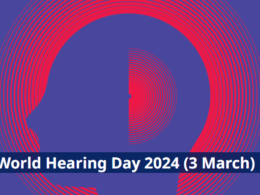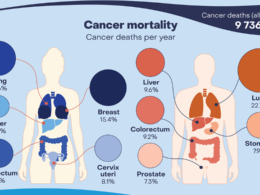the health strategist
platform
the most compreehensive knowledge portal
for continuous health transformation
and digital health- for all
Joaquim Cardoso MSc.
Chief Research and Strategy Officer (CRSO),
Chief Editor and Senior Advisor
December 11, 2023
What is the message?
Despite progress in expanding malaria prevention measures, the World Health Organization’s annual malaria report highlights a concerning increase in cases globally.
The report emphasizes the growing threats, including climate change impacts, which affect the behavior of malaria-carrying mosquitoes.
Urgent action is needed to address climate-related challenges and strengthen malaria responses to achieve sustainable progress.

What are the key points?
Rising Malaria Cases:
In 2022, there were 249 million malaria cases globally, surpassing pre-pandemic levels. The COVID-19 pandemic disrupted malaria services, leading to increased incidence and mortality rates.
Climate Change Nexus:
The report explores the connection between climate change and malaria. Changes in temperature, humidity, and rainfall influence mosquito behavior, and extreme weather events directly impact disease transmission. Catastrophic events, like flooding in Pakistan, led to a five-fold increase in malaria cases.
Indirect Climate Effects:
Climate variability indirectly affects malaria trends by reducing access to essential services and disrupting the supply chain for prevention tools. Population displacement due to climate-induced factors may also contribute to increased malaria cases.
Global Response Challenges:
The global malaria response faces challenges such as drug resistance, insecticide resistance, humanitarian crises, resource constraints, and delays in program implementation, particularly in high-burden countries.
Impact of COVID-19:
The COVID-19 pandemic significantly disrupted malaria services, resulting in additional cases and mortality. Certain countries, including Pakistan, Ethiopia, Nigeria, Papua New Guinea, and Uganda, experienced substantial increases.
Progress and Achievements:
The report acknowledges achievements, such as the rollout of the first WHO-recommended malaria vaccine, RTS,S/AS01, and progress toward malaria elimination in low-burden countries. A second malaria vaccine, R21/Matrix-M, has been recommended.
Call for Action:
To combat the increasing threat of malaria, a substantial pivot is needed, requiring increased resources, political commitment, data-driven strategies, and innovation in the development of more efficient prevention tools. Climate change necessitates sustainable and resilient malaria responses aligned with broader climate change mitigation efforts.
Whole-of-Society Engagement:
The engagement of society as a whole is crucial to building integrated approaches for combating malaria, addressing climate change impacts, and achieving long-term success.
DEEP DIVE

WHO’s annual malaria report spotlights the growing threat of climate change
World Health Organization – Geneva
November 30, 2023
Despite strides in expanding access to insecticide-treated nets and medicines to help prevent malaria in young children and pregnant women, more people were getting sick with malaria, according to a new report published by the World Health Organization (WHO).
In 2022, there were estimated 249 million malaria cases globally, exceeding the pre-pandemic level of 233 million in 2019 by 16 million cases. In addition to the disruptions caused by COVID-19, the global malaria response has faced a growing number of threats, such as drug and insecticide resistance, humanitarian crises, resource constraints, climate change impacts and delays in programme implementation particularly in countries with a high burden of the disease.
The 2023 World malaria report delves into the nexus between climate change and malaria. Changes in temperature, humidity and rainfall can influence the behaviour and survival of the malaria-carrying Anopheles mosquito. Extreme weather events, such as heatwaves and flooding, can also directly impact transmission and disease burden. Catastrophic flooding in Pakistan in 2022, for example, led to a five-fold increase in malaria cases in the country.
“The changing climate poses a substantial risk to progress against malaria, particularly in vulnerable regions. Sustainable and resilient malaria responses are needed now more than ever, coupled with urgent actions to slow the pace of global warming and reduce its effects,” said Dr Tedros Adhanom Ghebreyesus, WHO Director-General.
Climate variability is expected to have indirect effects on malaria trends through, for example, reduced access to essential malaria services and disruptions to the supply chain of insecticide-treated nets, medicines and vaccines. Population displacement due to climate-induced factors may also lead to increased malaria as individuals without immunity migrate to endemic areas.
Data on the long-term impact of climate change on malaria transmission is sparse. However, the direction and magnitude of any impacts are likely to vary across social and ecological systems, both within and between countries.
Trends in the global malaria burden and response
The COVID-19 pandemic significantly disrupted malaria services, leading to a surge in both incidence and mortality rates, exacerbating already stalled progress against the disease.
Globally there were an additional five million malaria cases in 2022 over the previous year and five countries bore the brunt of these increases. Pakistan saw the largest increase, with about 2.6 million cases in 2022 compared to 500 000 in 2021. Significant increases were also observed in Ethiopia, Nigeria, Papua New Guinea and Uganda.
Meanwhile, in the 11 countries that carry the highest burden of malaria, rates of new infections and deaths have levelled off following an initial upsurge during the first year of the pandemic. These countries, supported through the WHO “High burden to high impact” approach, saw an estimated 167 million malaria cases and 426 000 deaths in 2022. In view of current trends, progress towards critical 2025 milestones of the WHO global malaria strategy is off track by a wide margin.
“It is crucial to recognize the multitude of threats that impede our response efforts. Climate variability poses a substantial risk, but we must also contend with challenges such as limited healthcare access, ongoing conflicts and emergencies, the lingering effects of COVID-19 on service delivery, inadequate funding and uneven implementation of our core malaria interventions,” said Dr Matshidiso Moeti, WHO Regional Director for Africa. “To forge ahead toward a malaria-free future, we need a concerted effort to tackle these diverse threats that fosters innovation, resource mobilization and collaborative strategies.”
Grounds for optimism
The report also cites achievements such as the phased roll-out of the first WHO-recommended malaria vaccine, RTS,S/AS01, in three African countries. A rigorous evaluation has shown a substantial reduction in severe malaria and a 13% drop in early childhood deaths from all causes in the areas where the vaccine has been administered compared with areas where the vaccine was not introduced. This substantial reduction in illness and death is on top of what is being achieved in these areas where nets, indoor spraying with insecticides and other child health interventions have already been introduced.
In October 2023, WHO recommended a second safe and effective malaria vaccine, R21/Matrix-M. The availability of two malaria vaccines is expected to increase supply and make broad-scale deployment across Africa possible.
There has also been progress toward malaria elimination in many countries with a low burden of the disease. In 2022, 34 countries reported fewer than 1000 cases of malaria compared to just 13 countries in 2000. This year alone, three more countries were certified by WHO as malaria-free – Azerbaijan, Belize and Tajikistan – and several others are on track to eliminate the disease in the coming year.
What is needed now
A substantial pivot in the fight against malaria is needed, with increased resourcing, strengthened political commitment, data-driven strategies and innovative tools. Innovation should focus on the development of more efficient, effective and affordable products.
The added threat of climate change calls for sustainable and resilient malaria responses that align with efforts to reduce the effects of climate change. Whole-of-society engagement is crucial to build integrated approaches.
Note to editors
WHO’s work on malaria is guided by the Global technical strategy for malaria 2016-2030 (GTS), approved by the World Health Assembly in May 2015 and updated in 2021. The strategy called, among other targets, for reductions in malaria case incidence and mortality rates of at least 75% by 2025 and 90% by 2030, compared to a 2015 baseline. Through the “High burden to high impact” (HBHI) approach, catalyzed by WHO and the RBM Partnership to End Malaria in 2018, countries hardest hit by malaria are reaching populations at greatest risk of the disease with tailored packages of interventions informed by local data and disease settings. The 11 original HBHI countries include Burkina Faso, Cameroon, the Democratic Republic of the Congo, Ghana, India, Mali, Mozambique, Niger, Nigeria, Uganda and the United Republic of Tanzania. A 12th country, Sudan, adopted the HBHI approach in 2022.
Originally published at https://www.who.int/news











